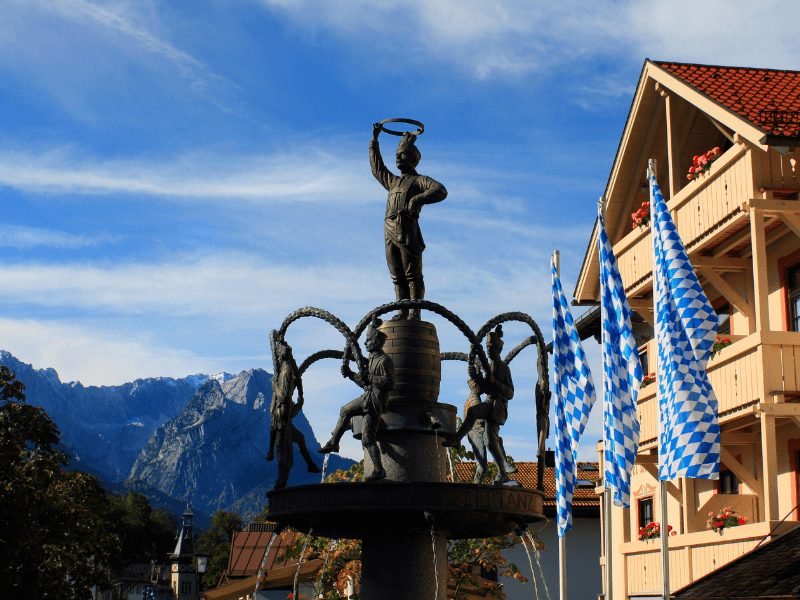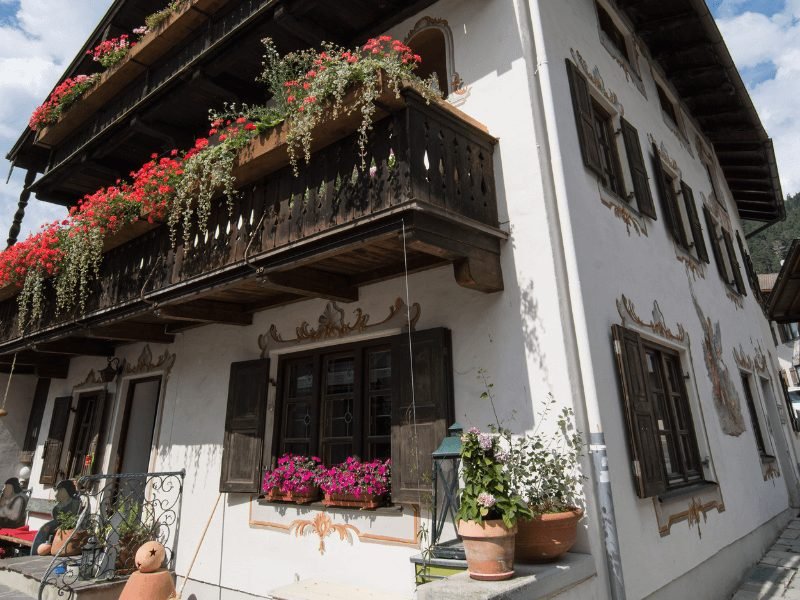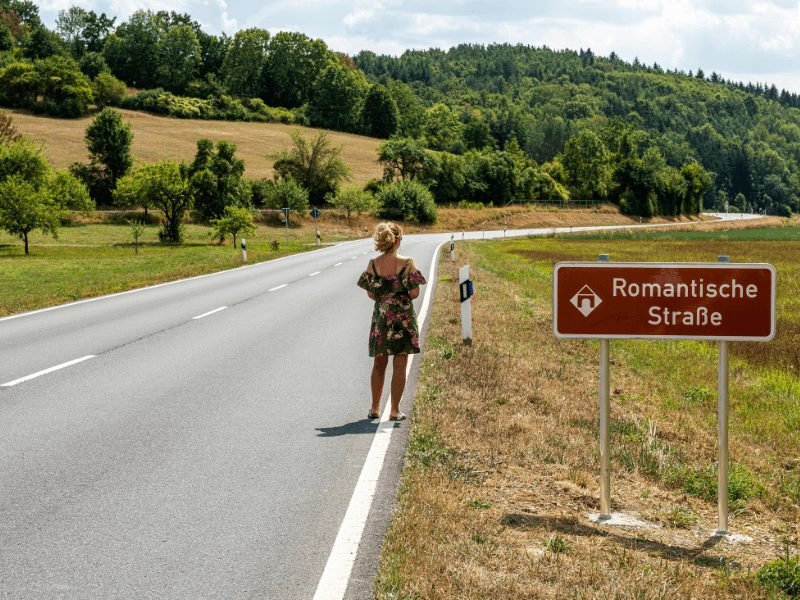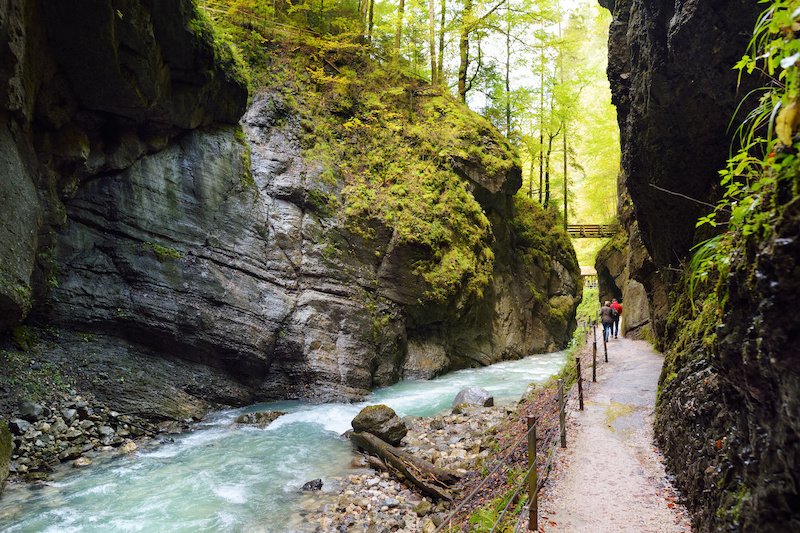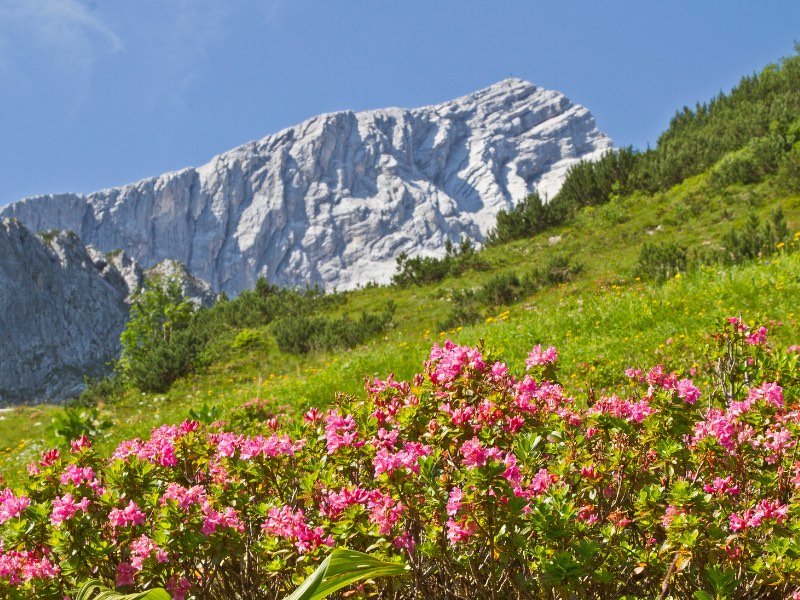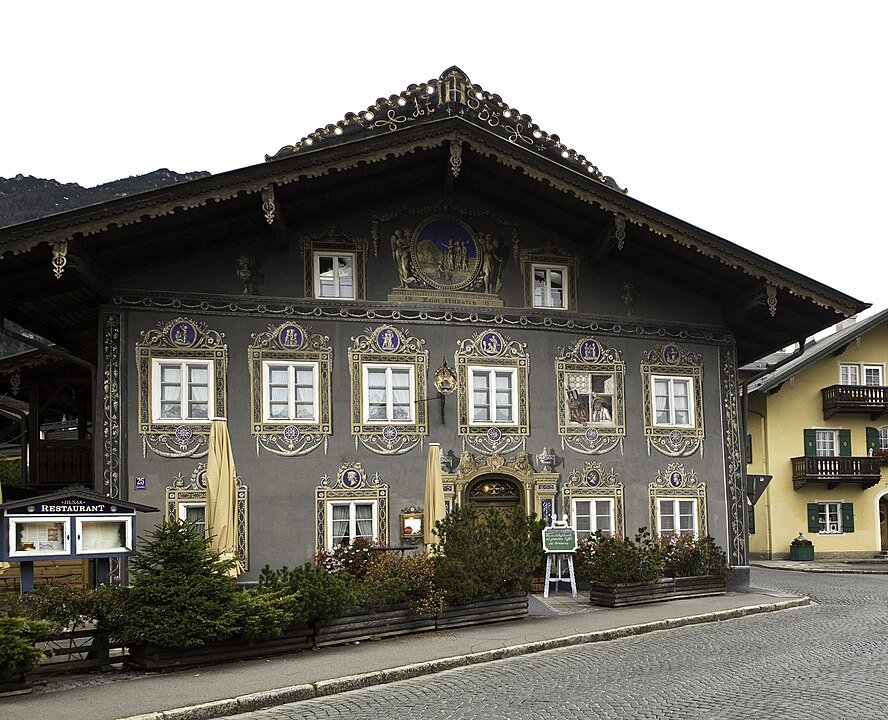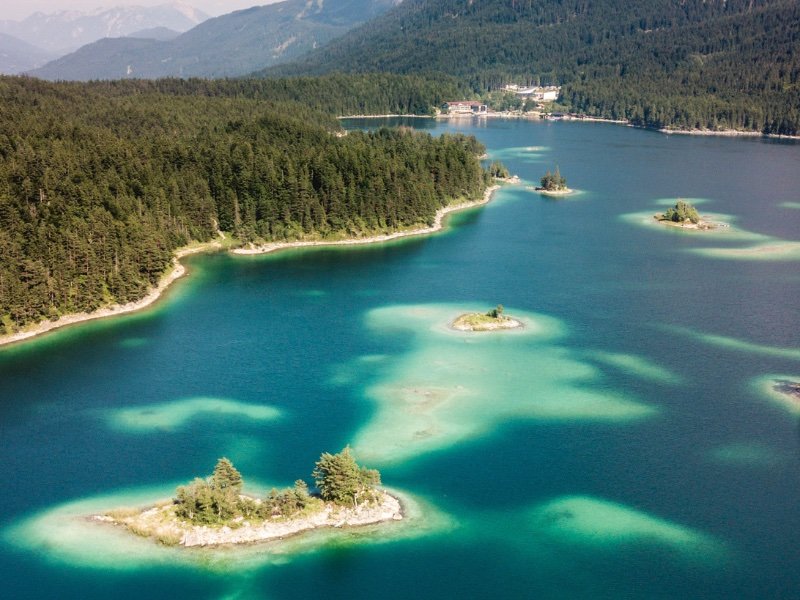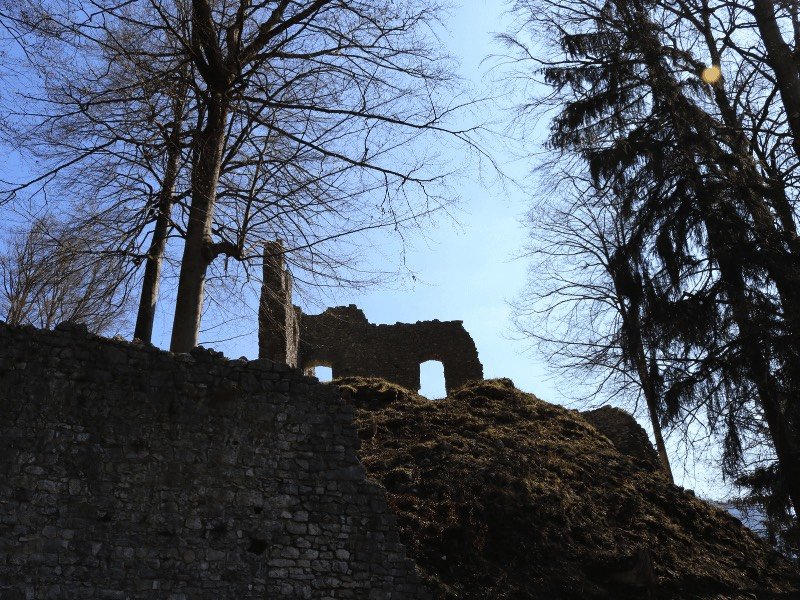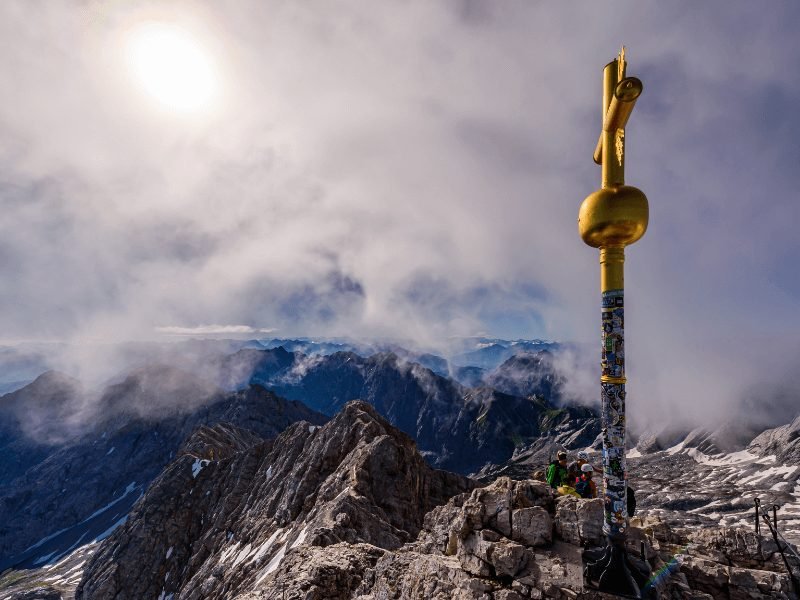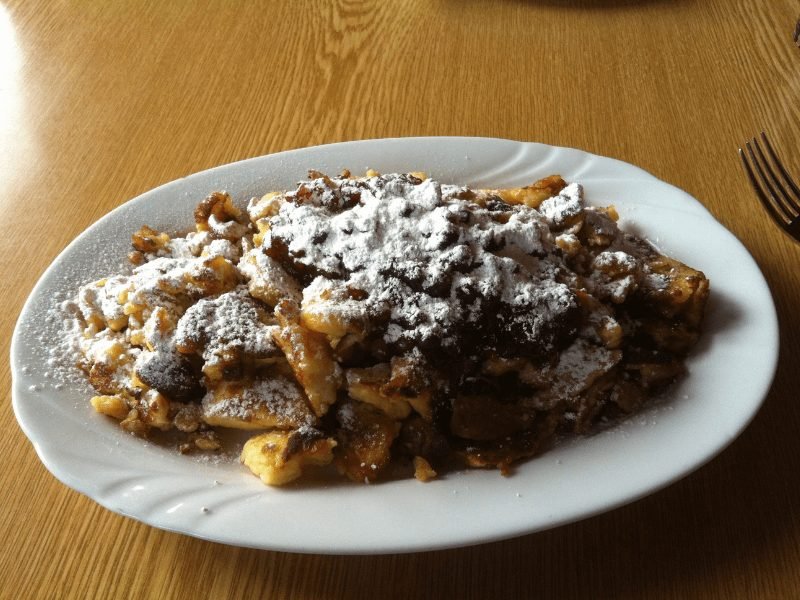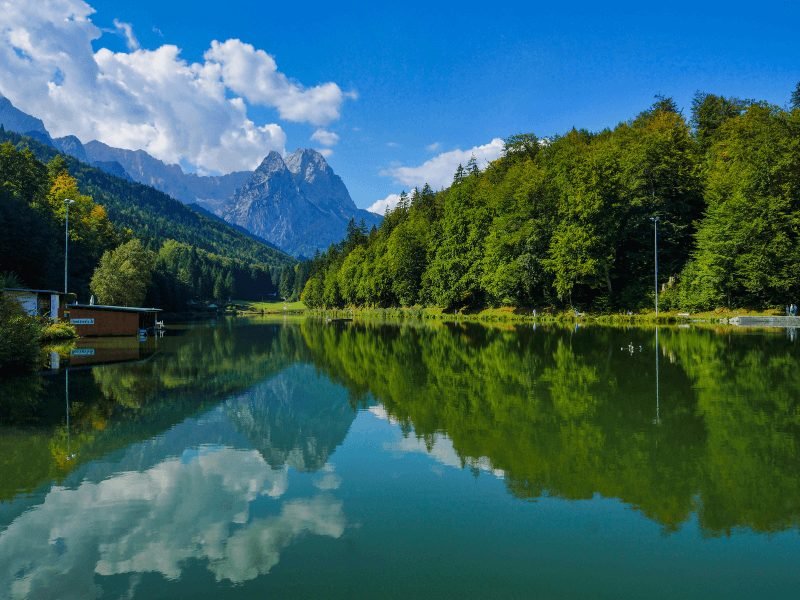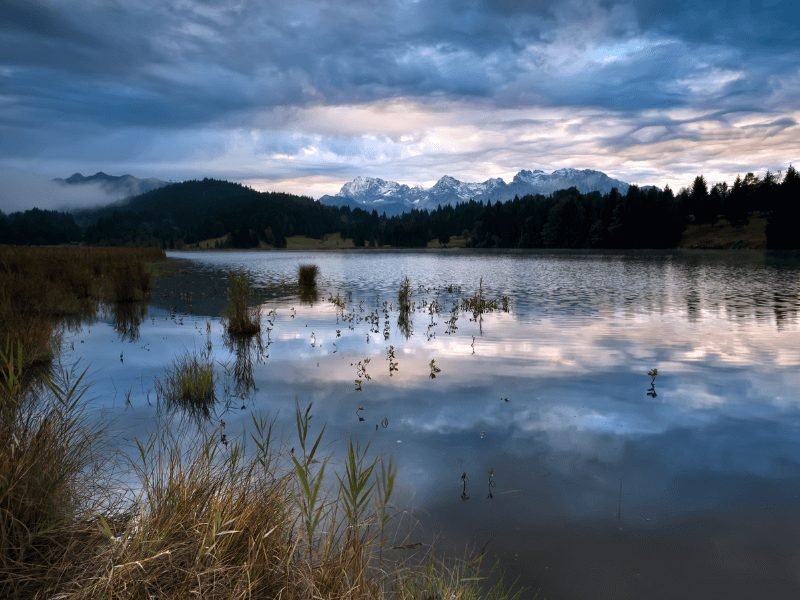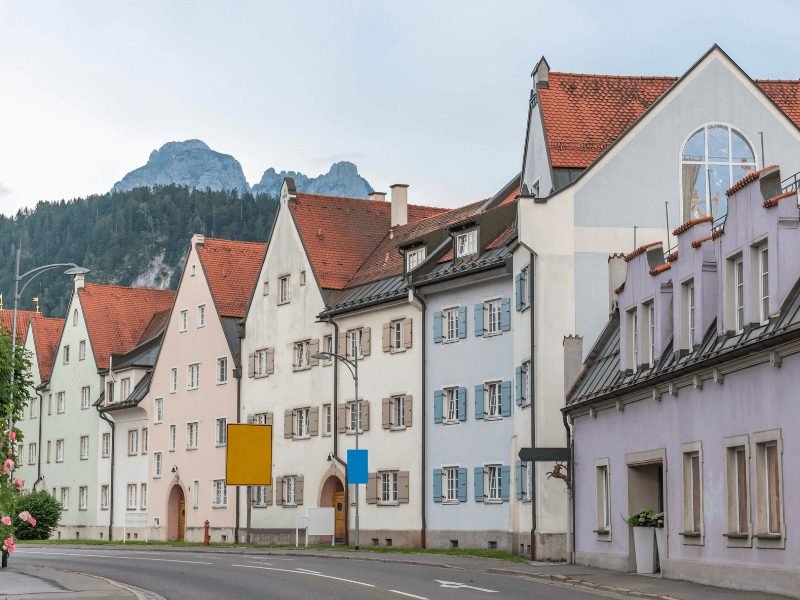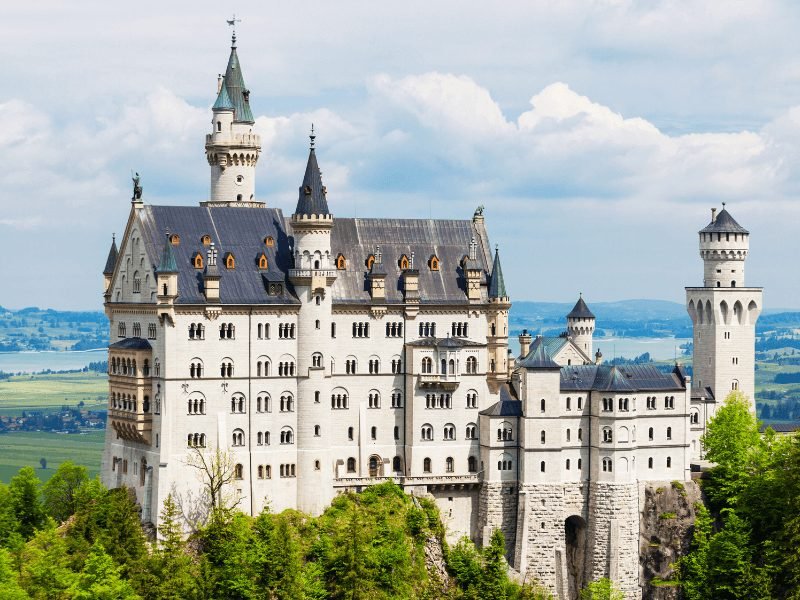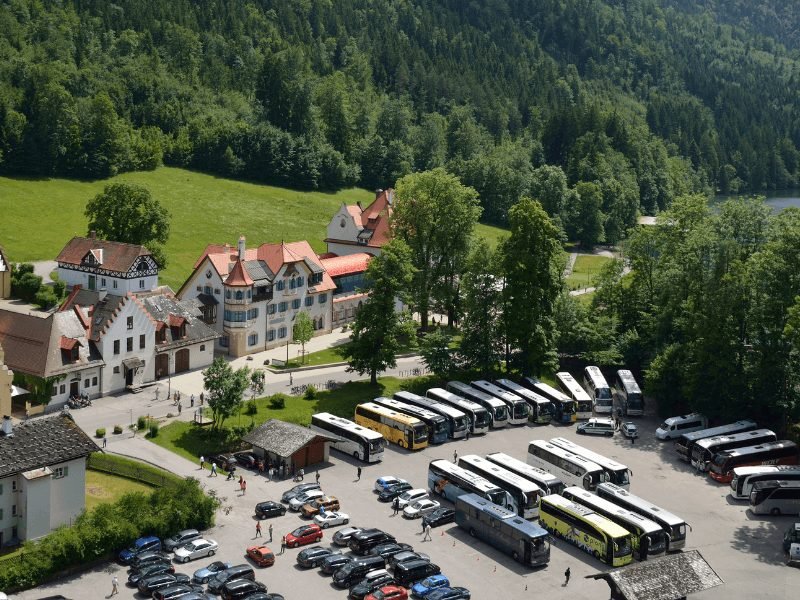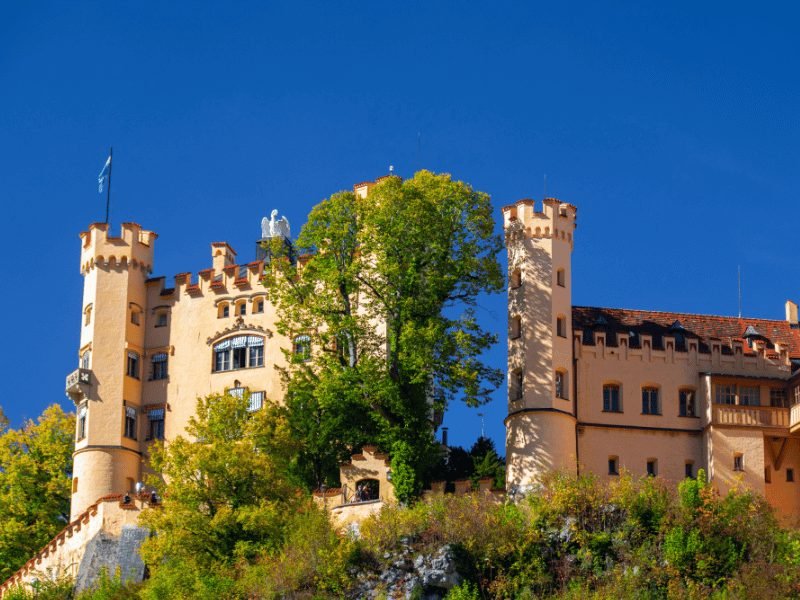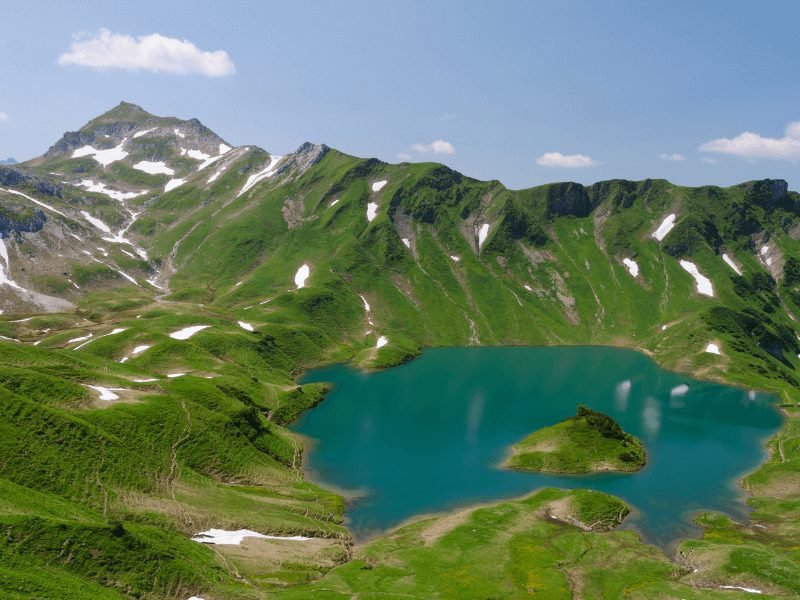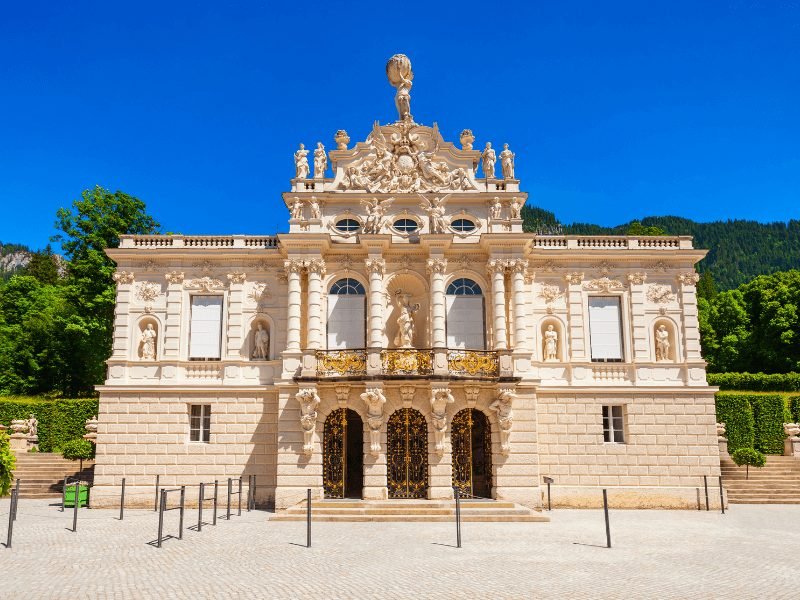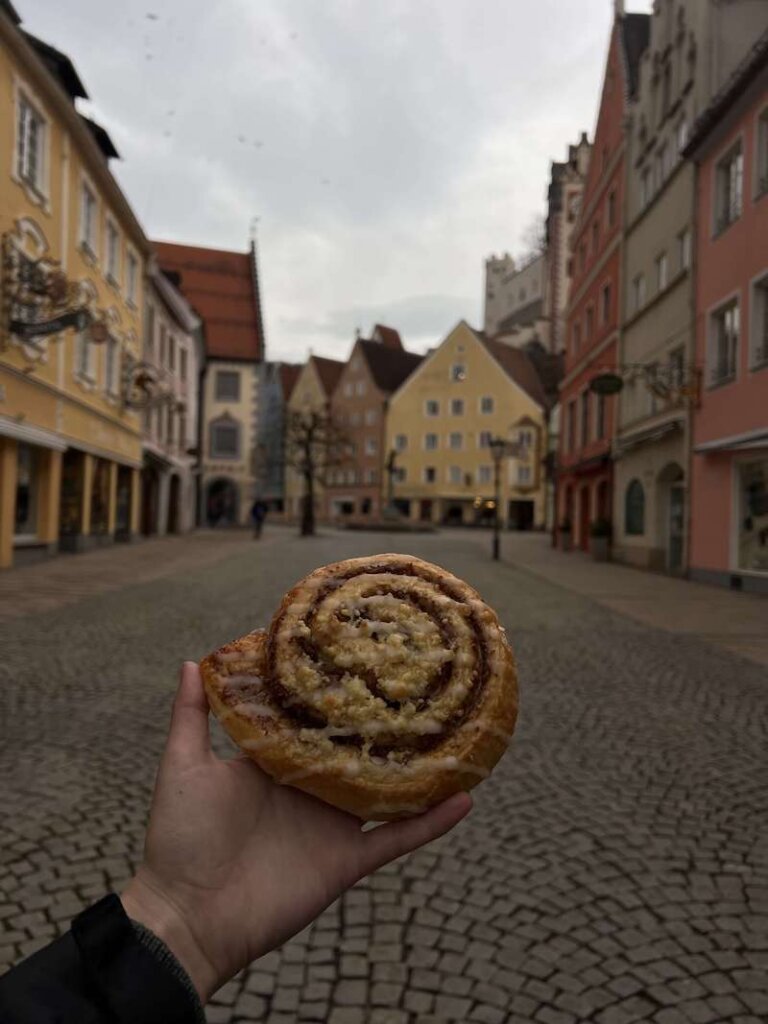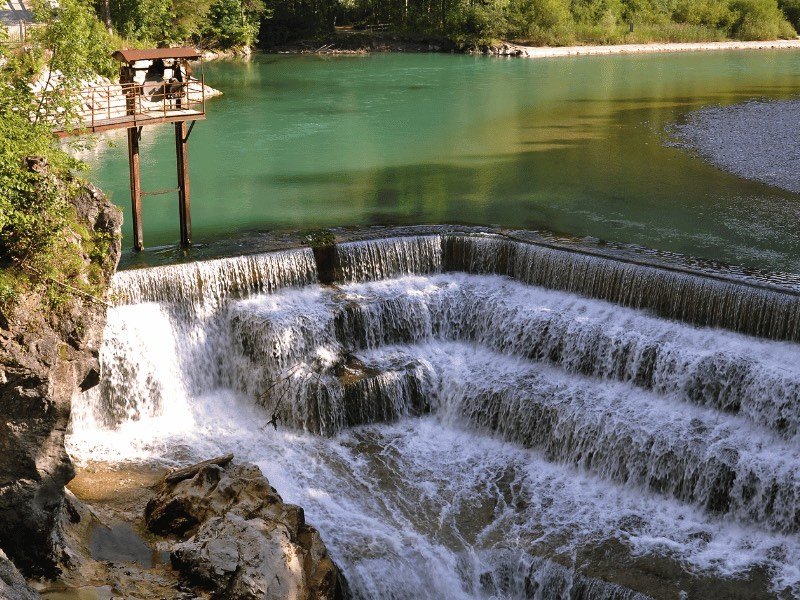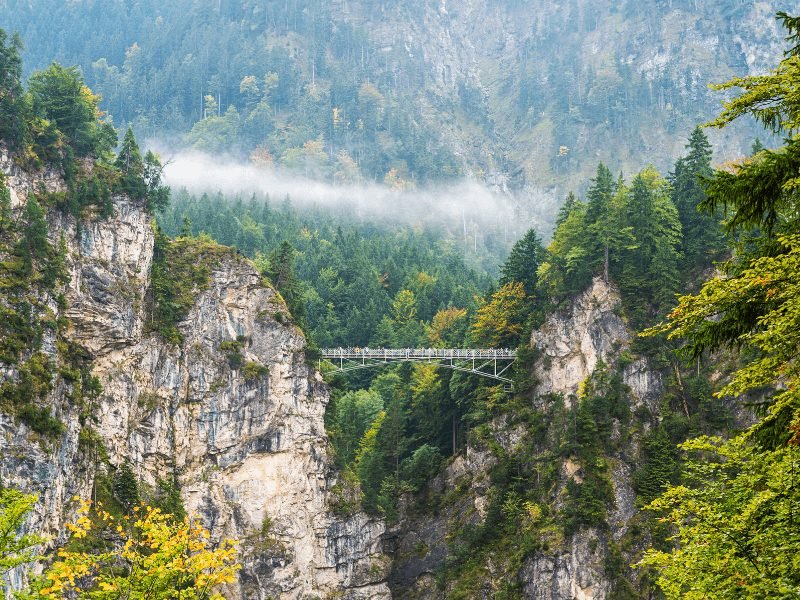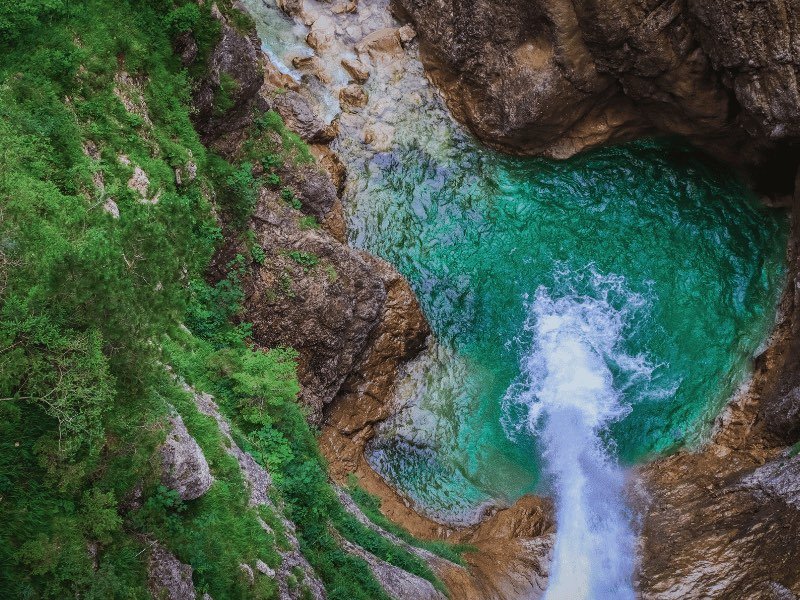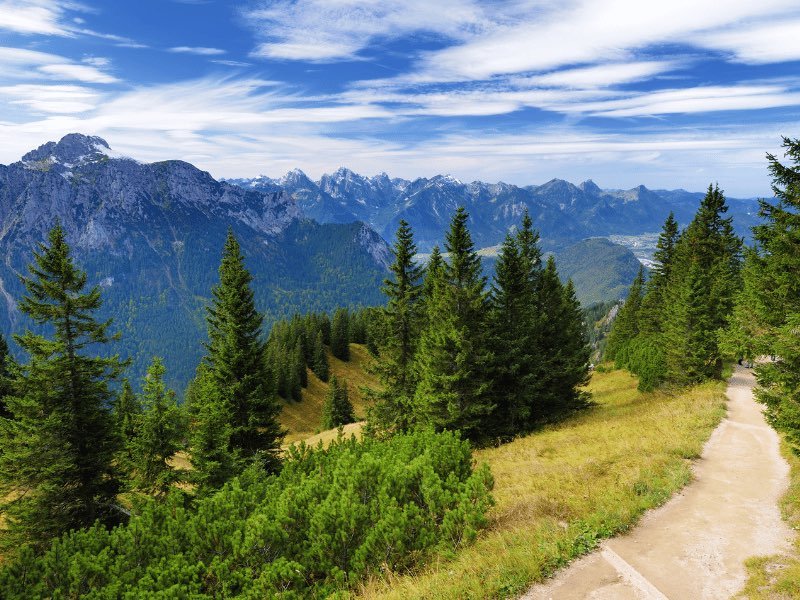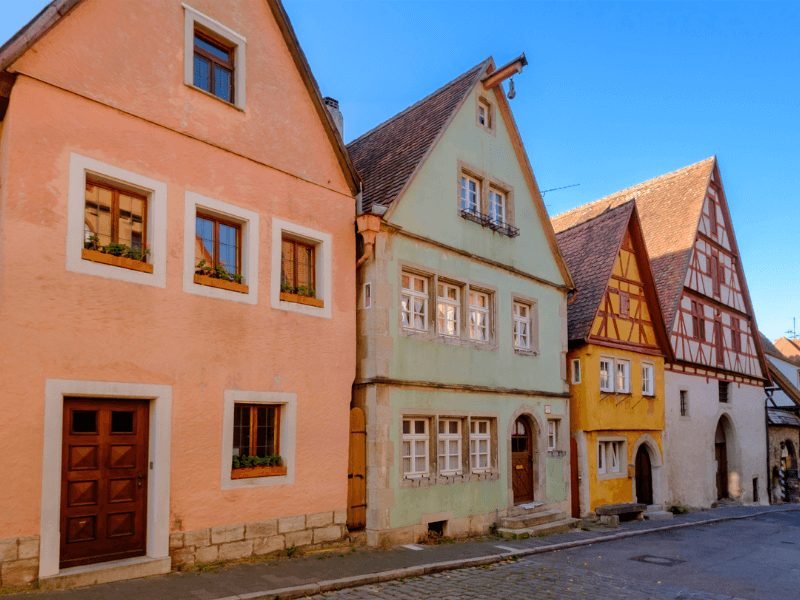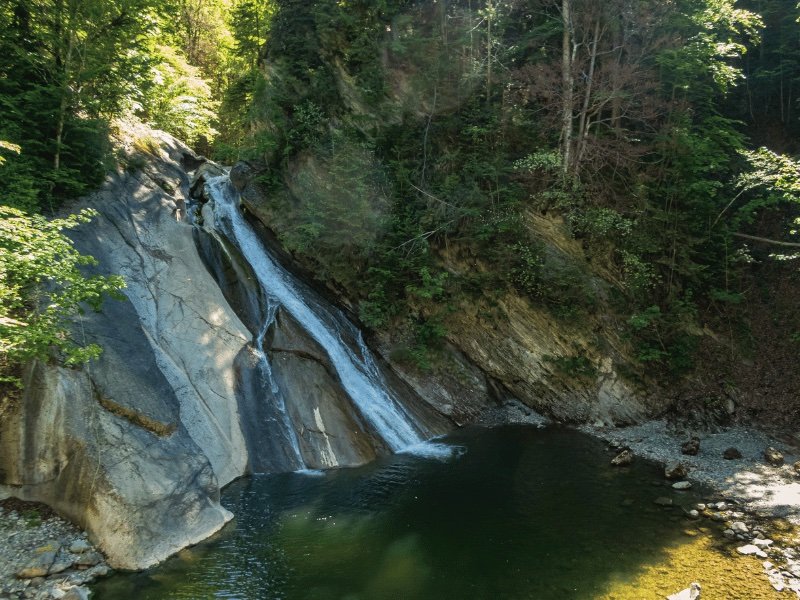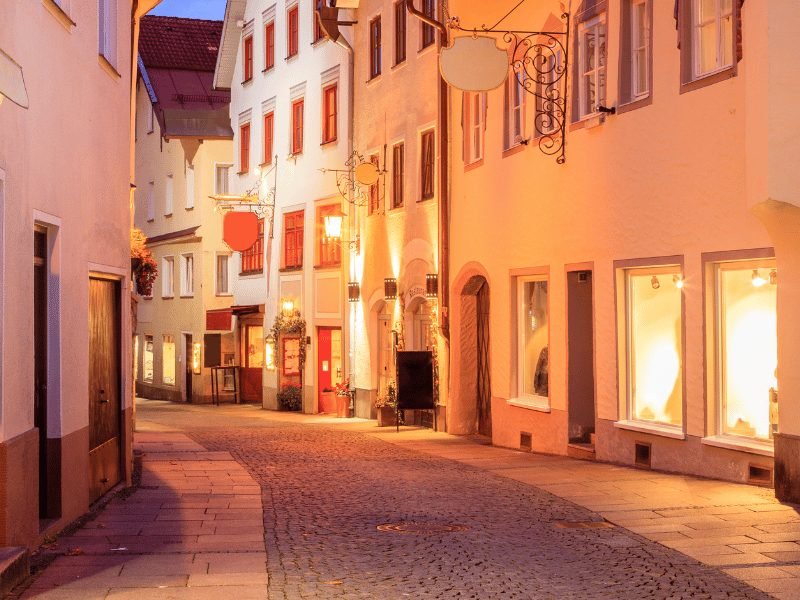Among the big European capitals, Berlin is likely the most diverse, multicultural, and alternative.
You may hear Germans say that Berlin is not Germany and Germany is not Berlin.
The city stands out from the rest of the country as an international, alternative, and artistic destination, home to endless attractions, activities, and sights waiting to be discovered.
As you explore Berlin, you’ll notice how past and present are always intertwined.
Historical landmarks coexist with modern buildings, and the traces of the city’s tumultuous history are still visible, yet Berlin is constantly looking to the future.
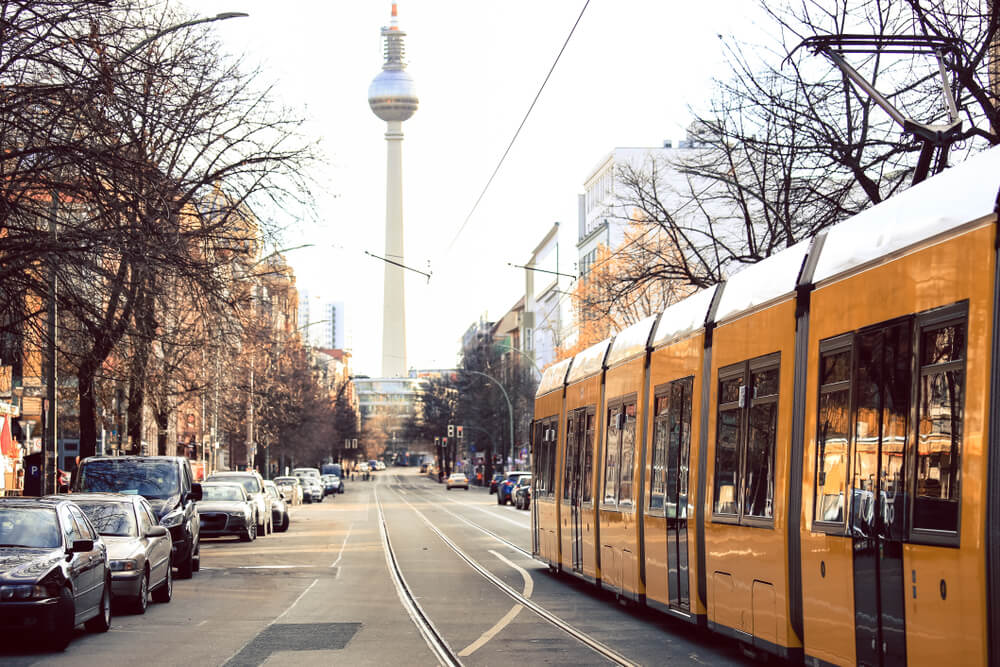
Expect to be emotionally touched by memorials dedicated to tragic events, stare in awe at beautiful art, and immerse yourself in the multicultural neighborhoods buzzing with life.
You can visit amazing museums, enjoy breathtaking panoramic views, sample cuisines from every corner of the world, and experience vibrant nightlife.
I lived in Berlin for nine months and got to experience every side of this constantly evolving city.
Over the course of this 4 day Berlin itinerary, you’ll get to explore Berlin’s vast offering of cultural activities, historical landmarks, amazing restaurants, lively bars, and much more.
Prepare for an intense but rewarding trip!
Day 1 of Your Berlin Itinerary: Berlin Mitte and Museum Island
Start your day with breakfast in Mitte.

Berlin Mitte is the heart of the city, and it’s aptly named, since mitte means center in German.
Many historical landmarks, museums, and other tourist attractions are in Mitte.
Begin your day by having breakfast in the area. The Greens is a charming coffee shop serving delicious coffee, cakes, and sandwiches.
Visit Berliner Dom.

After breakfast, walk along the river to reach Berlin Cathedral, known as Berliner Dom in German. The cathedral, with its iconic dome, towers over Museum Island, surrounded by a lovely park with neatly curated lawns and fountains.
The cathedral’s history started with the building of St. Erasmus Chapel in the 15th century, but the structure you see today was built between 1894 and 1905.
The church dome was destroyed during World War II, and part of the cathedral was severely damaged.
It took a long time for the Berliner Dom to be rebuilt, but after years of work, it was finally reconsecrated in 1993.
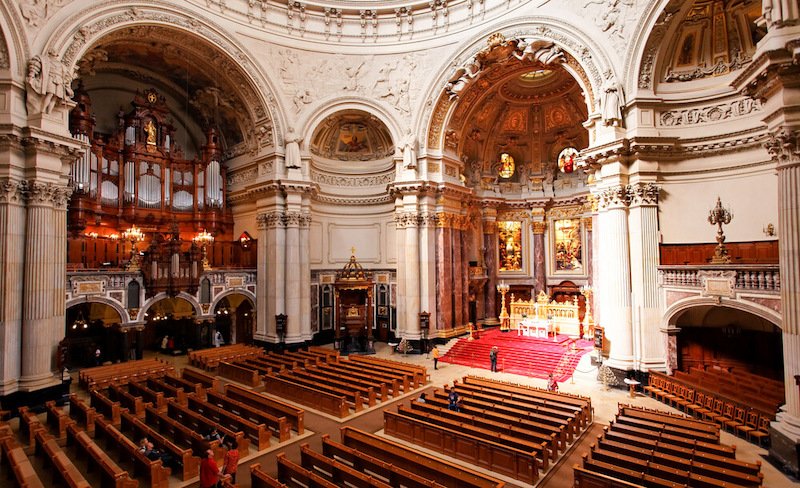
You can visit the cathedral daily, but on Sundays, it only opens at noon, so be sure to plan accordingly.
The admission ticket gives access to the church and the dome, which offers a beautiful panoramic view of the city.
You can buy the ticket on the Berliner Dom website.
Tip: If you get the Berlin Welcome Card, you can get discounts on this and many other landmarks — a useful thing to have if you plan to follow this Berlin itinerary!
Get cultured on Museum Island.
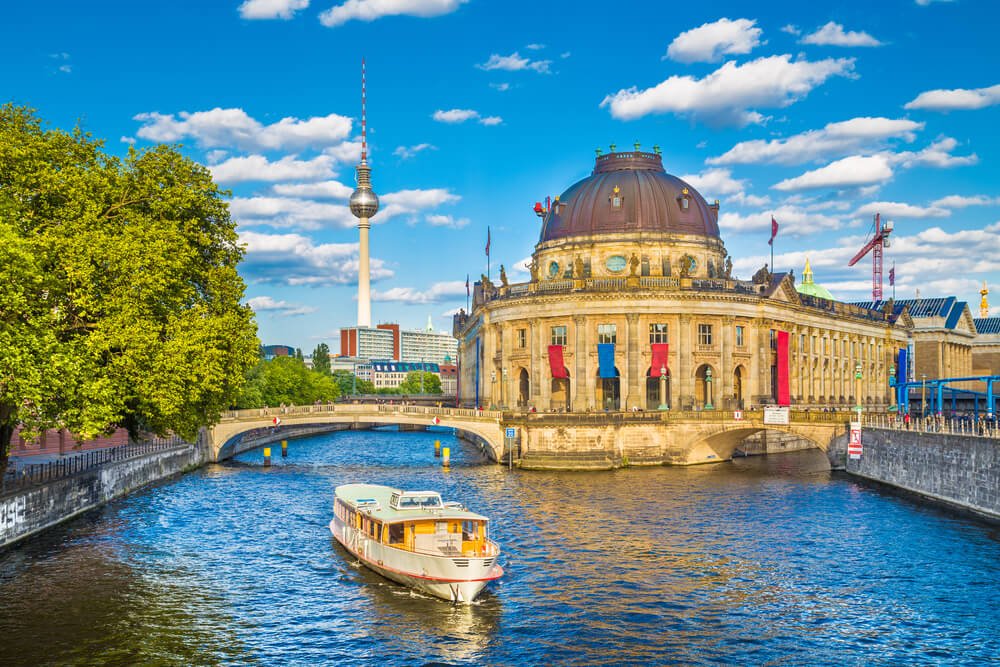
After the cathedral, it’s time to visit some of Berlin’s iconic museums — conveniently clustered together for easy sightseeing during this Berlin itinerary.
Many of these are on Museum Island (Museuminsel), just a few steps from Berliner Dom.
Of course, visiting all these museums would take several days in Berlin — and I’m sure you don’t want to spend it all in museums.
That being said, it’s worth picking out one or two that you’re most interested in if you only have four days in Berlin.
Pergamonmuseum
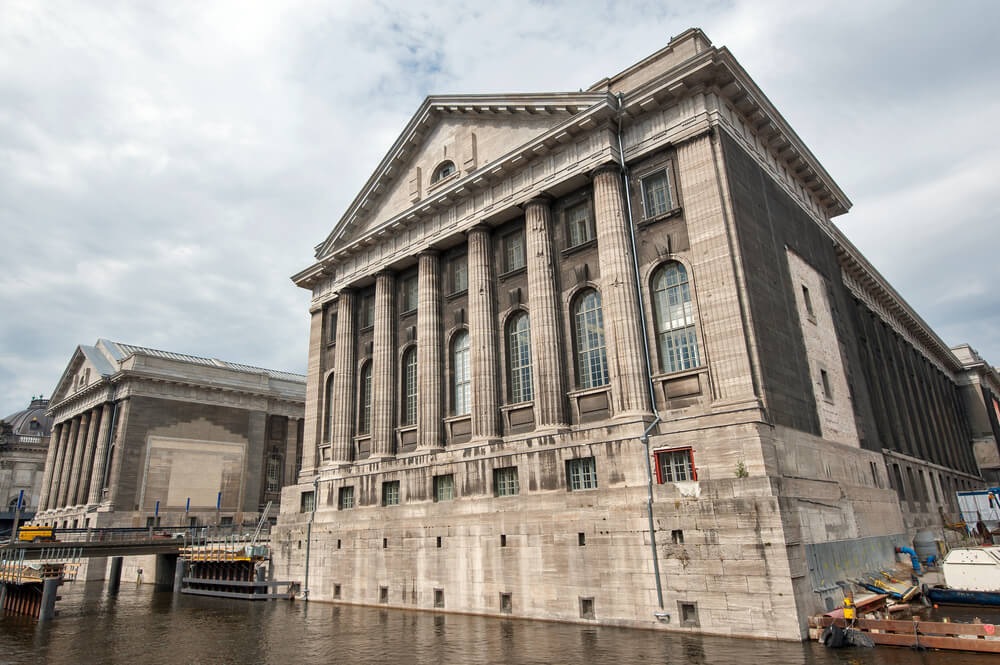
The beloved Pergamonmuseum is one of the most renowned museums in Berlin, housing three collections.
Those three main collections are the Antiquities Collection, the Near Eastern Museum, and the Museum of Islamic Art.
Here, you can see world-famous attractions, the most famous of which is the colorful Ishtar Gate from Babylon (now Iraq).
You can also see sights like the impressive Pergamon Altar from Ancient Greece, the Ancient Roman market gate of Miletus, the decorated Mshatta Façade from Jordan, and the paneled Aleppo Room.
Lines often form at the Pergamonmuseum, so it helps to book your skip-the-line tickets in advance.
You can also buy a tour that covers both the Pergamonmuseum and the next item on this itinerary, the Neues Museum, and also includes a pass for other Museum Island sights.
This may be the best deal if you want to explore Berlin’s museums to the max!
The Neues Museum
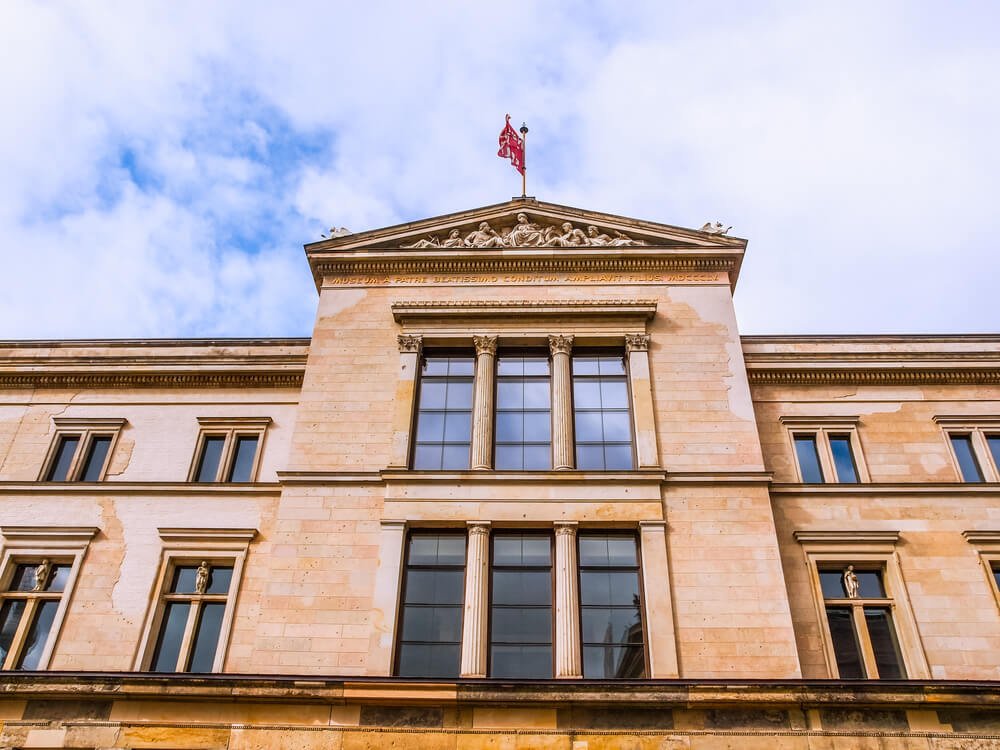
The name is a bit of a misnomer, as this museum features anything but new things!
Rather, the Neues Museum is better known for its Egyptian Museum and Papyrus Collection, which houses the famous bust of Nefertiti along with other Egyptian sculptures, literary works, and funerary architecture.
The complex is also home to the Museum of Prehistory and Early History, featuring archaeological finds ranging from the Stone Age to the Middle Ages.
It’s another one of the most popular Berlin museums, and you can book a tour of it (along with the Pergamonmuseum) or you can buy skip-the-line entry independently.
The Altes Museum

Now this museum’s name makes more sense!
The Altes Museum (or Old Museum) is dedicated to classical antiquity, home to important Roman and Greek artifacts.
In the museum, you can admire beautiful sculptures, ancient jewelry and coins, and a large collection of Etruscan art.
The Alte Nationalgalerie & Bode Museum
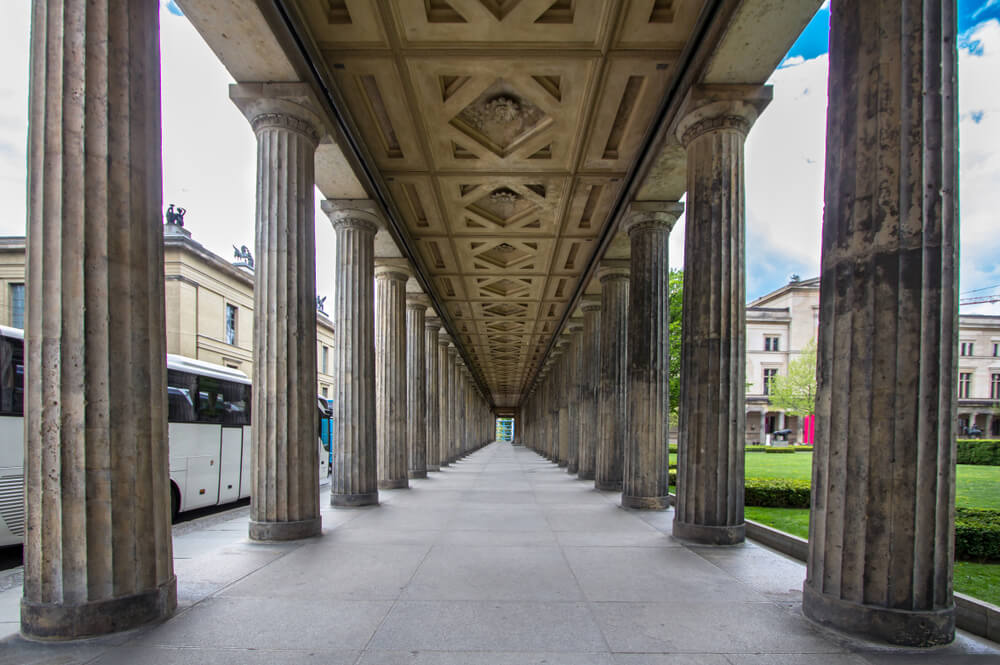
Two other museums complete the vast array on Museum Island: the Alte Nationalgalerie and the Bode Museum.
The first is dedicated to Romantic, Realist, and Impressionist masterpieces. You can buy tickets online here.
Meanwhile, the latter is home to a rich collection of sculptures and Byzantine art. You can buy tickets online here.
Tip: If you plan on visiting more than one museum, it’s worth buying a combination ticket like the Berlin WelcomeCard, which gives you admission to all the museums of Museuminsel included and 72 hours of public transportation.
It also includes discounts of 50% on partner attractions and museums.
Have a lunch break in Hackescher Markt.
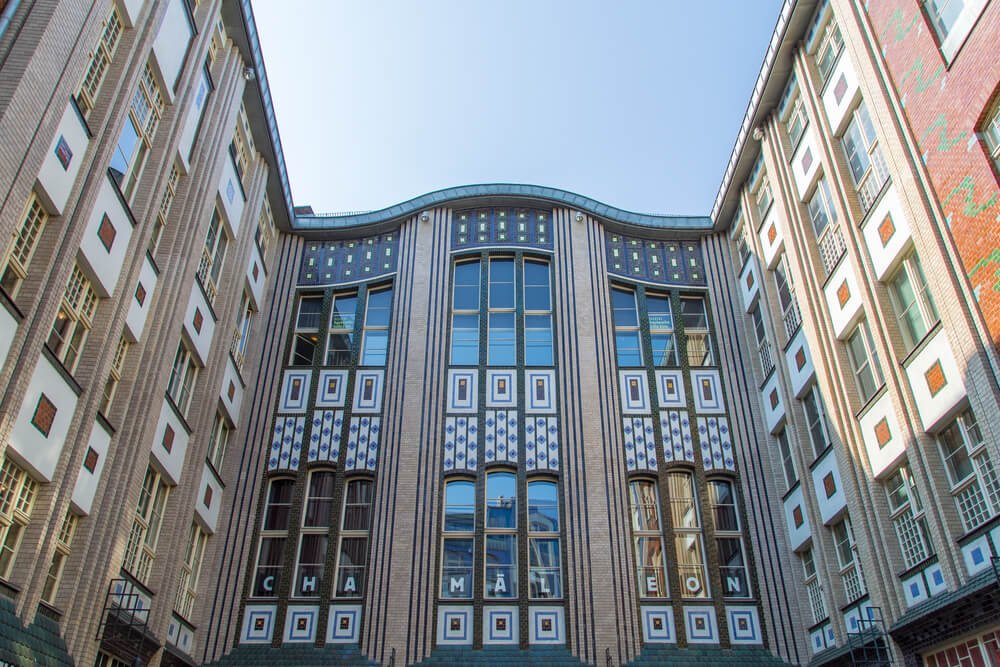
Cross the river via Friedrichsbrücke and head to Hackescher Markt for a lunch break.
The area offers a variety of local and international cuisines, from vegan Vietnamese at Quy Nguyen to Thai at Sisaket and Georgian at Kin Za.
For some quick German takeout, head to Curry 61 and grab a traditional currywurst with fries — it’s a Berlin must-do!
Visit more museums and explore Nikolaiviertel.
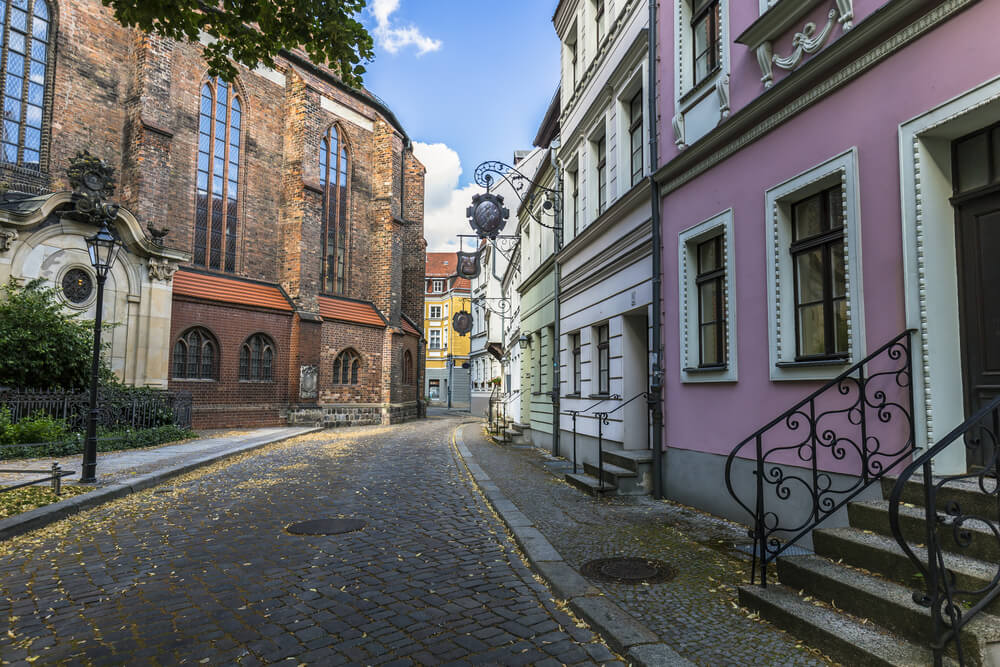
After lunch, you can head back to Museum Island to visit one more museum, or simply wander around Berlin Mitte.
One area worth exploring is Nikolaiviertel, a charming historic neighborhood and Berlin’s oldest residential quarter.
The neighborhood is centered around the beautiful St. Nicholas’ Church Museum. Originally the city’s oldest church, it’s now a museum and events venue.
All around it, you can check out the charming, colorful houses and stroll along the river.
Be sure to pass by the striking statue of St. George The Dragonslayer!
Enjoy the view from Fernsehturm.

No trip to Berlin would be complete without admiring the view from the iconic TV Tower (Fernsehturm). The perfect time to head up is right before sunset, so you can watch the city lights slowly turn on.
You can choose between several ticket options for the TV Tower. If you simply want to enjoy the view, go for the basic skip-the-line ticket with access to the viewing floor.
You can also book a skip-the-line entry that includes a window seat reservation to the revolving restaurant, The Sphere (meal is not included).
An even better deal are these priority entry tickets that include afternoon tea, which include coffee or tea, a sweet treat like a muffin, and a sandwich, all for about $10 more than just the window-seat reservation.
Trust me, you’ll pay a lot more than that if you order food á la carte!
End your day with dinner and drinks.
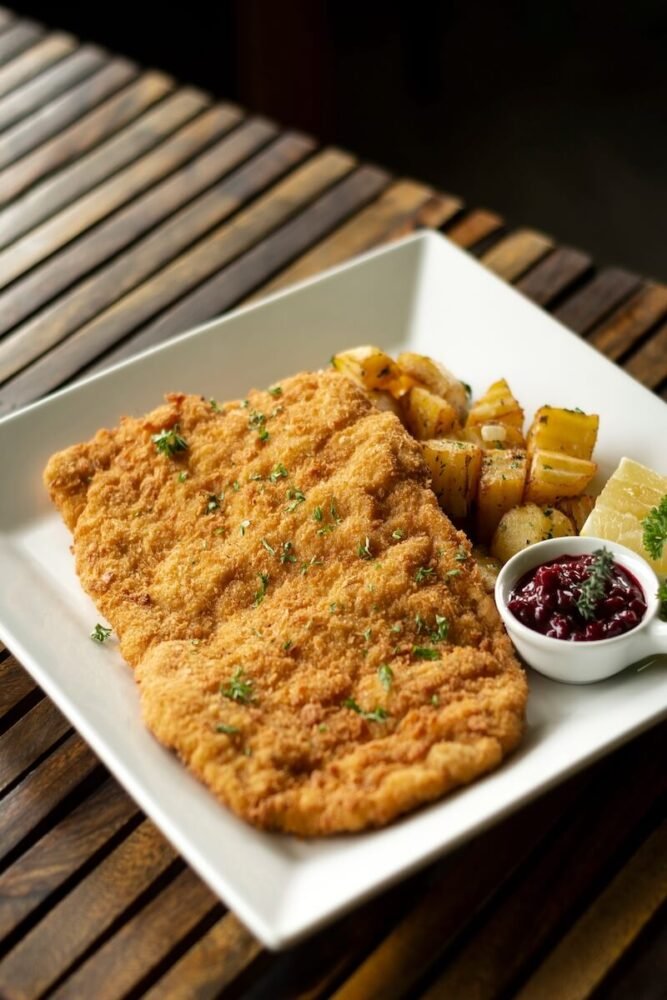
The TV Tower also features a revolving restaurant where you can enjoy traditional German dishes while admiring the 360° city view.
To really ball out, you can go for VIP entry and an elegant 3-course dinner at The Sphere, taking in sunset and nightfall views of Berlin — which is a great choice for a special occasion!
If you prefer a restaurant that’s a little closer to the ground, the area between Rosenthaler Platz and Oranienburger Tor has a variety of restaurants.
Head to Schnitzelei Mitte for delicious schnitzel and other traditional German dishes.
International restaurants in the area are also well worth your time, including Salamat for Middle Eastern or Royals & Rice for Vietnamese.
For an after-dinner drink, head to 100 Gramm Bar or check out the live music or DJ sets at Mein Haus am See.
If you want to party, you’re in luck, since Berlin is known for some of the best clubs in Europe.
At Sisyphos Nightclub, the party keeps going from Friday to Monday, while Matrix Club is open daily.
Day 2 of Your Berlin Itinerary: Historic Landmarks and War Memorials
Grab breakfast before visiting the Reichstag.
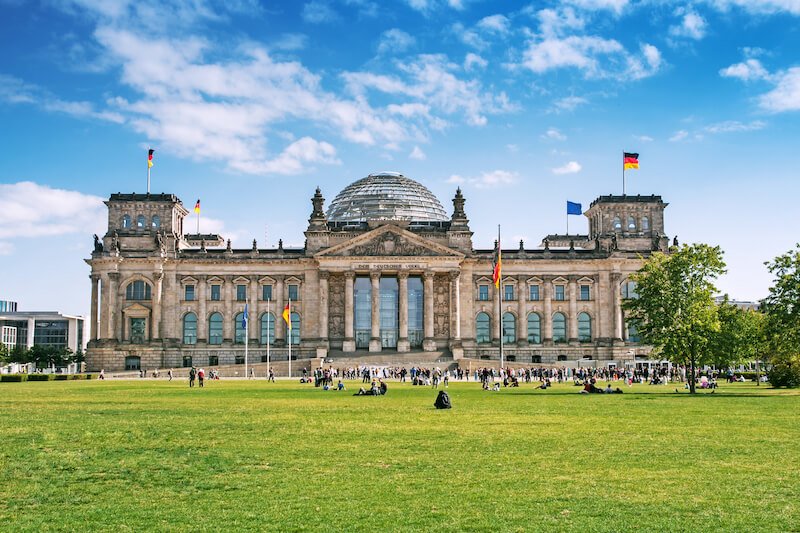
We’ll begin your second day in Berlin by joining a tour of the Reichstag Building (the Parliament).
But first, you should have a delicious breakfast or grab a quick coffee at Adlon.
The parliament tour can take up to three hours, so you’ll want to make sure you have something to eat before.
Stop to admire the historic Brandenburger Tor.
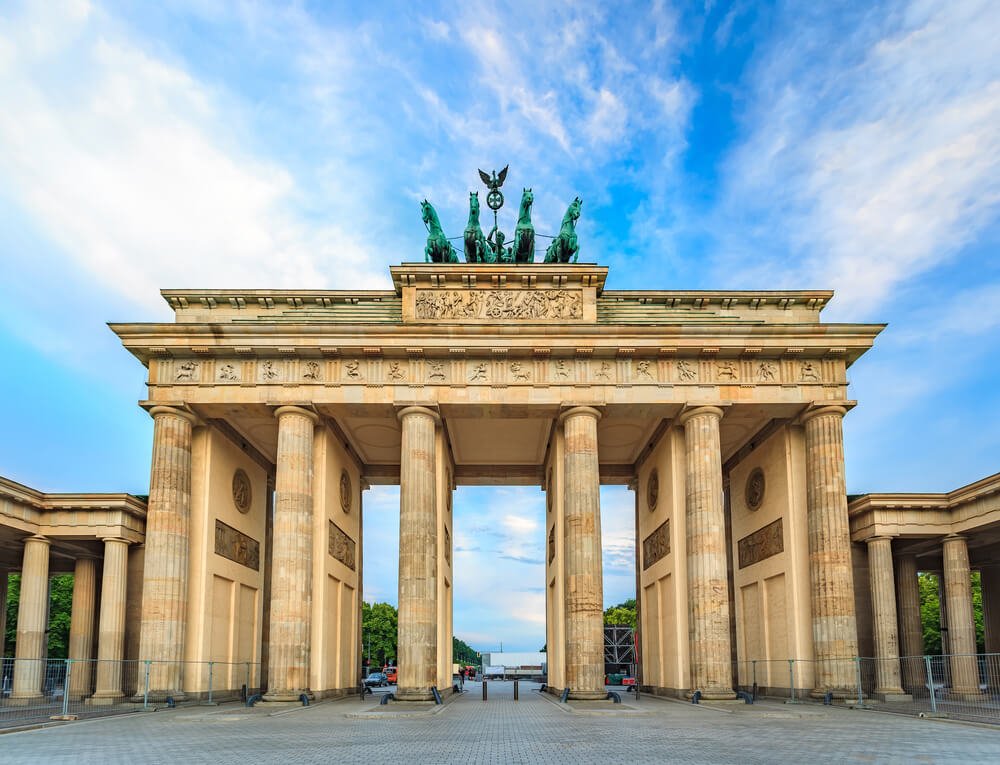
On your way to the Reichstag, stop by the iconic Brandenburger Tor.
The monumental Neoclassical gate built in the late 18th century used to serve as the entrance to Unter den Linden boulevard, which leads straight to the Berlin Palace, the former residence of Prussian royalty.
Nowadays, Brandenburger Tor is one of the city’s better-known landmarks.
The Reichstag is just a short walk from Brandenburger Tor, so it makes sense to stop by on your way!.
Visit the architectural marvel of the Reichstag.

The Neo-Renaissance building dates to the late 19th century, but its most prominent feature is the glass dome, completed in 1999.
The original steel and glass cupola was destroyed in 1933 and wasn’t reconstructed for nearly 70 years — so it’s a relatively new and suitably modern addition.
You have two options for visiting the Reichstag. You can either register online on the official website or buy a guided tour.
Admission to the Reichstag is free. However, you must book online several weeks in advance or go there in person and hope to find a reservation for one or two days later.
Online registration is the best option, especially if you are only staying in Berlin for a few days.

Depending on the season, you may need to book your slot even two months before the trip, so this option is less than ideal for a spontaneous last-minute trip.
You can book just the dome visit or include a free guided tour when available.
If you didn’t make your reservation in time, there’s still hope. You can book one of the many guided tours that include access to the Reichstag dome and plenary chamber alongside a government district tour.
This Plenary Chamber, Dome & Government District Tour is the most popular choice, usually available a couple of weeks in advance.
Alternatively, this Government Quarter Tour and Reichstag Dome Visit may have spots even just a few days before your chosen date.
Pay your respects at the Holocaust Memorial.
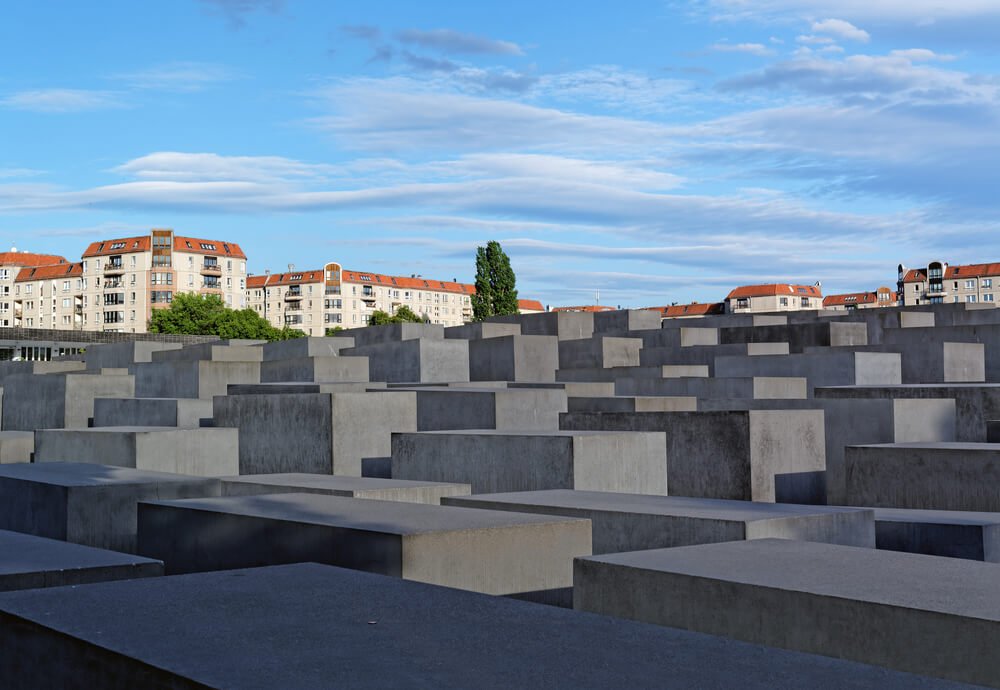
After visiting the parliament building, walk to the Memorial to the Murdered Jews of Europe.
This somber landmark consists of 2,710 concrete blocks of various heights, in memory of the six million Jews who were victims of the Holocaust.
While the monument leaves room for interpretation, the goal of the project was to create a sense of unease and confusion.
Walking through the tall concrete blocks is meant to elicit feelings of loneliness, isolation, and oppression.
You can also visit the free exhibition within the information center underneath the monument.
Stop for lunch in Potsdamer Platz.
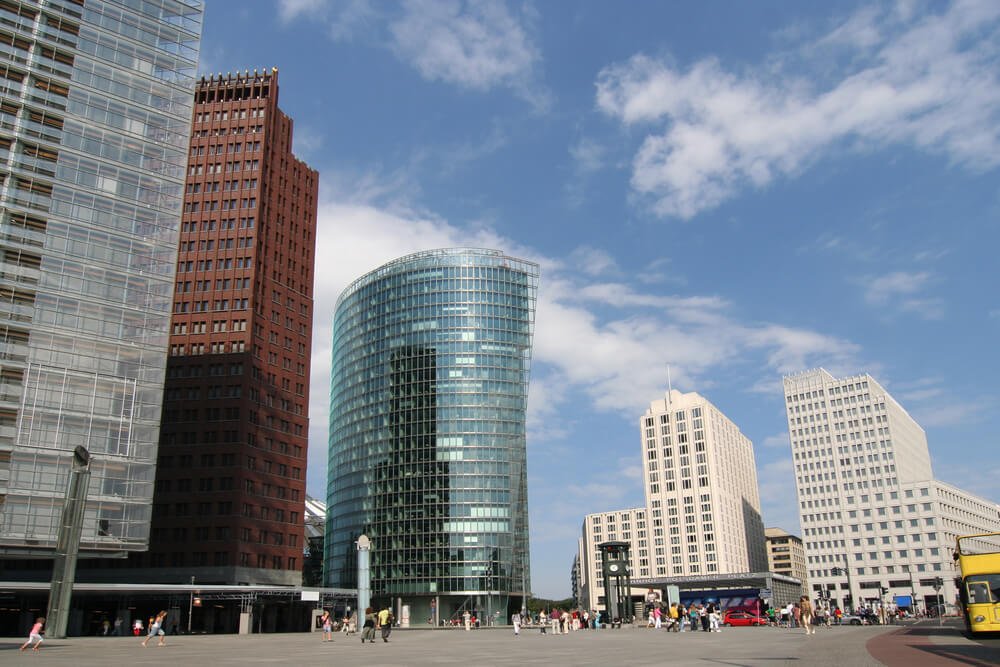
After visiting the Holocaust Memorial, you can take a short walk to reach Potsdamer Platz, a significant square in Berlin that underwent a complete reconstruction after the fall of the Berlin Wall.
Today, it features modern buildings, entertainment centers, a shopping mall, and plenty of restaurants all around.
The diverse restaurant options offer everything from traditional German dishes to vegan food and refined dishes.
Head to Harina in Love for tasty Argentinian food, or try one of the many quick options inside the Mall of Berlin, like the vegan burgers at Vedang.
Stroll through Tiergarten.
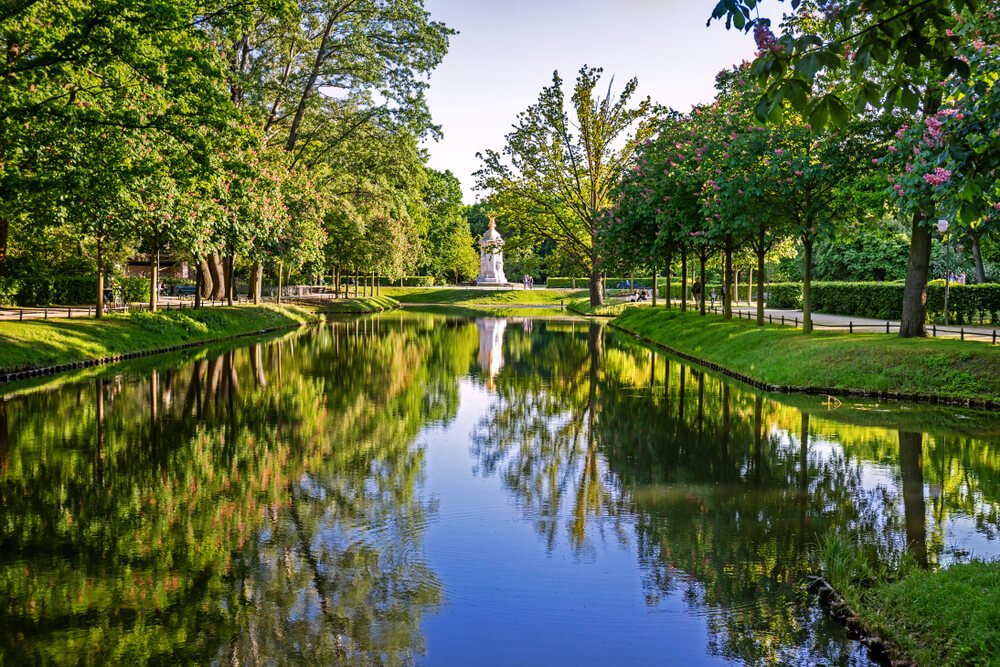
After lunch, you can enjoy a pleasant walk through the nearby Tiergarten, Berlin’s largest park.
It’s so large, in fact, that exploring the whole thing could easily take an entire day.
You can stick to the eastern part of Tiergarten or make your way to the famed Victory Column (Siegessäule).
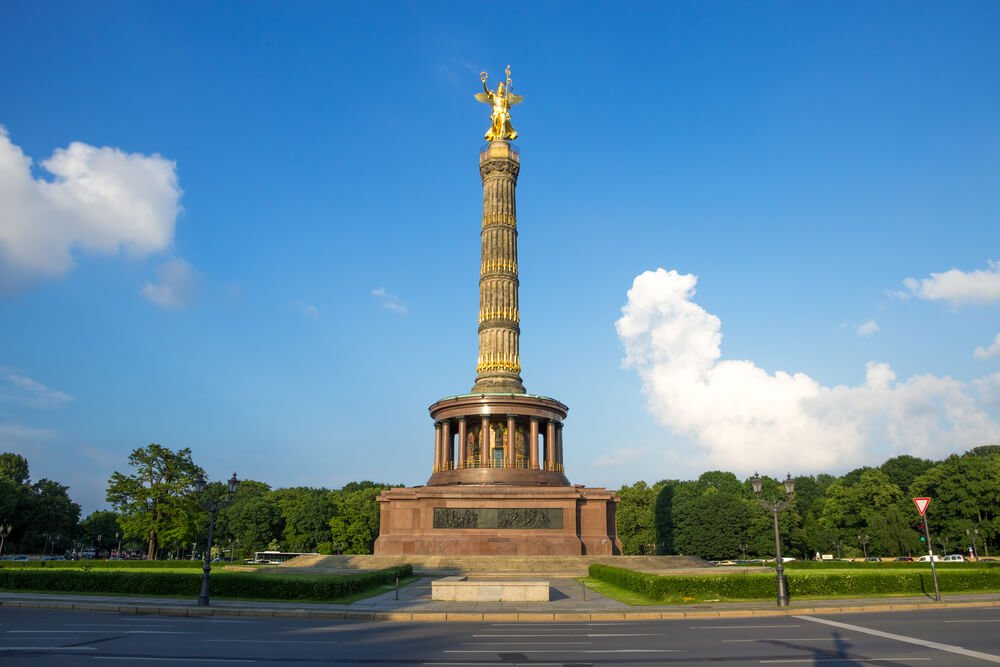
The 67-meter-tall column featuring the golden winged figure of the Goddess of Victory has a viewing deck that’s the perfect viewpoint to see just how vast Tiergarten really is!
From the top, you can spot iconic landmarks like the Brandenburger Tor and TV Tower.
From Victory Column, walk back towards the center to explore a few more landmarks.
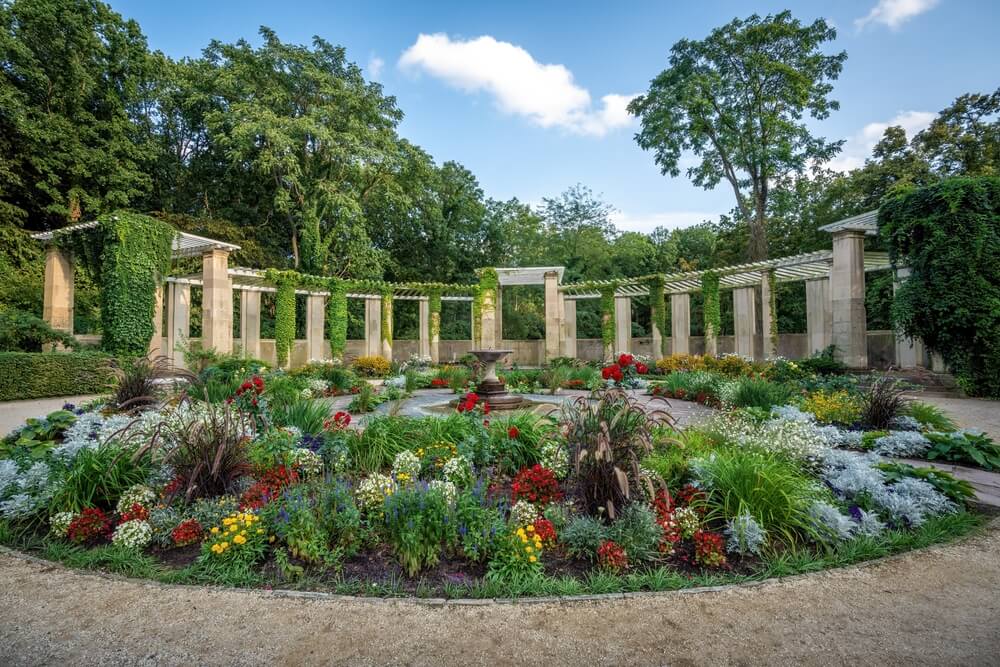
Along the way, you can stop by the Rosengarten, which is one of the most beautiful parts of the park.
You can also cross the various bridges that cross over the lake, and check out some of the sculptures and memorials dotting the park.
Visit the iconic buildings of Gendarmenmarkt.

First, walk toward the heart of Berlin Mitte and make your way over to Gendarmenmarkt.
This is another iconic square in Berlin, surrounded by impressive buildings.
On two sides of it, you’ll see two churches, Deutscher Dom and Französischer Dom.
In between them stands the beautiful Konzerthaus Berlin, a concert hall dating to the early 19th century.
Stop by the famed Checkpoint Charlie.
![sign in multiple languagse stating that you are leaving the american sector [part of berlin wall]](/wp-content/uploads/2023/09/checkpoint-charlie-sign-shutterstock_246233560-2.jpg)
Just a 10-minute walk south of Gendarmenmarkt, you’ll find the famous Checkpoint Charlie, the former border crossing between Berlin East and West controlled by Americans.
In the middle of Friedrichstraße, you can even see a replica of the old border post, as well as a portion of the old wall.
Around Checkpoint Charlie, you’ll see many museums dedicated to the Cold War and the Berlin Wall, like BlackBox Cold War or THE WALL.
Another popular museum nearby is the Trabi Museum, featuring vintage Trabant cars.
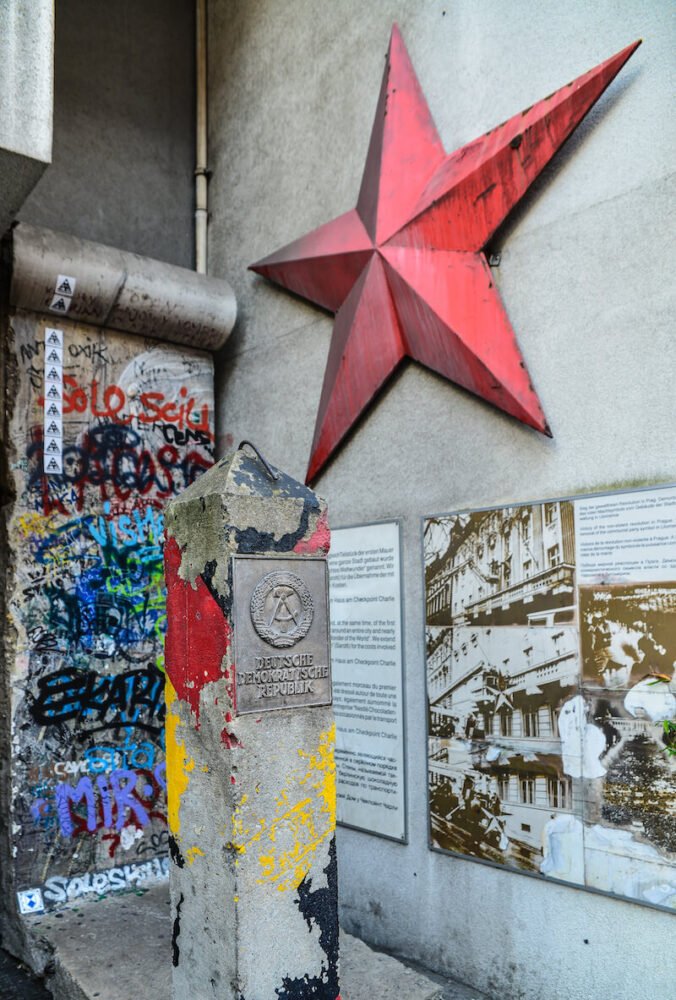
However, note that most museums close in the late afternoon, around 5 PM, so be sure to get here early if you want to visit any of them.
For a late evening museum visit, you can head to the German Spy Museum, featuring interactive exhibits, old spy equipment, and props from James Bond movies.
The museum is near Potsdamer Platz and stays open until 8 PM.
Have dinner and drinks in Kreuzberg.
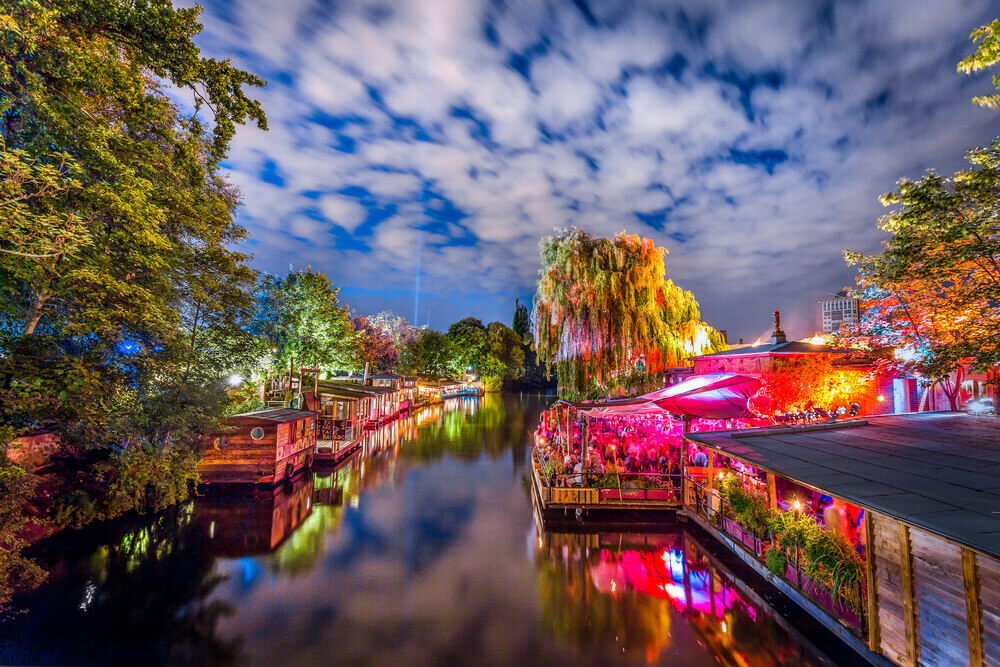
Kreuzberg is one of Berlin’s most lively and alternative neighborhoods, home to a diverse cultural life, street art, international restaurants, bars, and cafés.
This is the perfect place to sample Turkish and Middle Eastern cuisine. Head to YAGO for Israeli cuisine, Falafelwerk for Lebanese specialties, or Mercan for delicious Turkish food.
After dinner, stop by one of the many lively bars in the area, especially on Flutgraben Canal, or check out spots like Misfit Bar Berlin or Bar39, where you can enjoy a cocktail or a beer while listening to music.
Day 3 of Your Berlin Itinerary: Charlottenburg and East Berlin
Visit Schloss Charlottenburg.
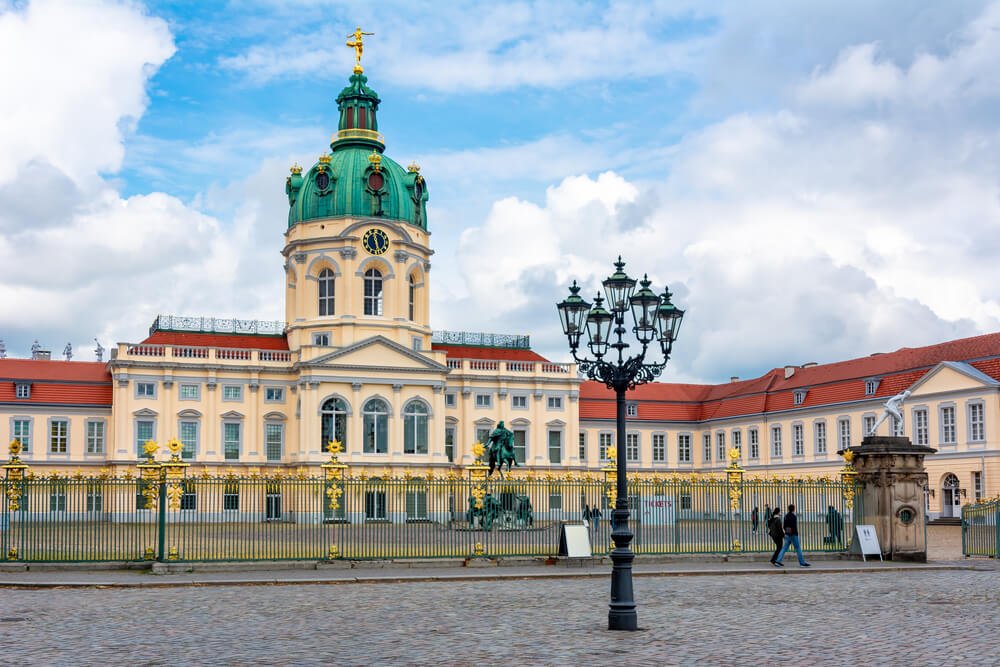
On your third day in Berlin, it’s time to leave Mitte and explore some of Berlin’s other areas.
Begin your day by heading to Charlottenburg to visit Berlin’s most famous castle, Schloss Charlottenburg.
The imposing Baroque summer palace features gorgeous gardens and houses a collection of paintings, tapestries, porcelain, and classical furniture.
Built at the end of the 17th century and expanded during the 18th century, the palace was commissioned by Sophie Charlotte, who would later become the first queen of Prussia.
The entry fee allows you to visit the Old Palace, preserving original Baroque decorations, the New Wing, the Mausoleum, and the New Pavilion.
You can wander around the beautiful gardens for free, but I recommend visiting the palace interior, too.
Expect to spend at least a couple of hours visiting the palace and exploring the gardens.
Admire the Kaiser Wilhelm Memorial Church.

After visiting the palace, catch the subway to Zoologischer Garten to check out another important landmark, the Kaiser Wilhelm Memorial Church.
The partially destroyed church stands unrepaired as a symbol of the destruction caused by World War II.
The old church, built in the 1890s, was significantly damaged during the bombing campaign against Berlin at the end of World War II.
When the time came to build a new church, architects proposed to tear down the remains of the old one, but Berliners protested the idea.
The ruined church remained, while a modern one was erected right next to it. You can visit both the memorial and new church for free.
Go window shopping at KaDeWe.
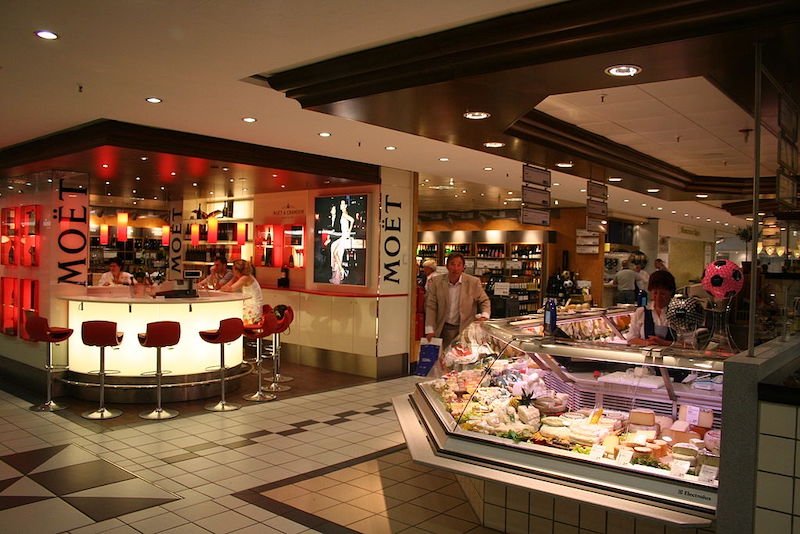
While you’re in the area, check out Berlin’s most famous department store.
Kaufhaus des Westens (KaDeWe) has been around for over a century and remains one of the most renowned shopping malls in the city (and its one of the most festive places in the city if you’re visiting Berlin in winter).
Whether you plan on buying a German souvenir or just want to go window shopping, KaDeWe is a sight that simply has to be seen.
The department store is Europe’s second largest after Harrods in London.
You’ll find everything from luxury goods and beauty accessories to books, electronics, and design items, as well as an impressive food hall… but save your appetite, because lunch is next!
Have lunch at Thaipark or Savignyplatz.

If you visit Berlin between late spring and early autumn, you should have lunch at Thaipark (at least) once.
From Friday to Sunday, Preußenpark becomes the scene of a giant picnic. Thaipark, as it is called, started by chance in the 1990s when Thai families living in the area began having picnics in the park.
More families from different Asian countries started gathering in Preußenpark, and soon people began asking if they could buy their food.
The families started setting up food stalls, and the word spread until Thaipark became one of the most beloved traditions in the area.
As you stroll through, you’ll find a great variety of food, from Thai to Chinese, Laotian, Cambodian, Indonesian, and much more.
If you visit Berlin during Thaipark’s off-season, head to Savignyplatz for lunch. The charming area offers a great variety of restaurants and cafés.
Grab a table at Dicke Wirtin for German specialties or order something from the diverse menu at Schwarzes Café.
Visit the East Side Gallery.

After lunch, it’s time to explore Berlin’s largest open-air museum, the East Side Gallery.
This is the longest portion of the Berlin Wall left standing, a memorial transformed into an art gallery by the artists who decorated the wall with colorful murals.
Start walking along the wall from the northern end close to Berlin Ostbahnhof and make your way south.
As you go, make sure you’re checking both sides of the wall to see all of the art.
The murals were originally painted in the spring of 1990, months after the fall of the Berlin Wall, but after being severely damaged, they were restored in 2009.

At the opposite end of the wall portion, you’ll find the Oberbaum Bridge, one of Berlin’s most iconic bridges over the River Spree.
If you have time, keep walking along the river to see the Molecule Man floating on the river.
You can spend the rest of the afternoon strolling around the vast Treptower Park or the lively Görlitzer Park.
Have dinner near Görlitzer Park.

The area around Görlitzer Park offers a great variety of restaurants.
As for most of Berlin, international cuisine is predominant, Asian and Middle Eastern in particular.
Mikoto Sushi serves tasty Japanese dishes, Sadhu is the place to go for Pakistani food, while The Hummusapiens is great for Lebanese specialties.
Day 4 of Your Berlin Itinerary: Take a Day Trip to Potsdam
On our final day, we’ll explore Potsdam, a beautiful and historic city just outside Berlin.
We’ll offer two options: how to DIY it, and a recommended day trip in case you prefer that.
Visit Potsdam independently.
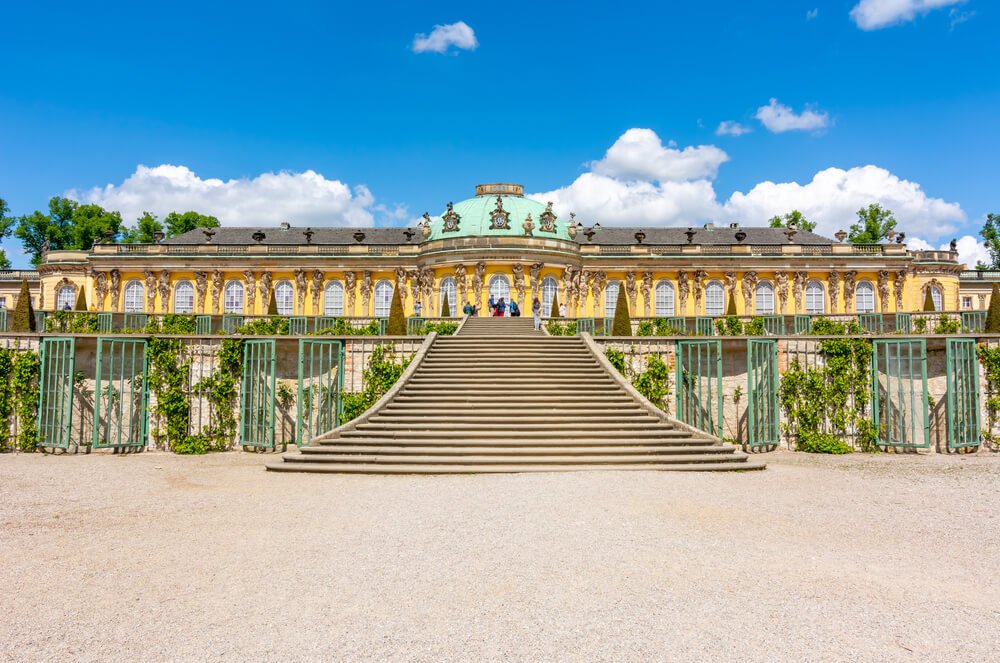
On the fourth day of your Berlin itinerary, it’s time to leave the city entirelyand explore nearby gorgeous Potsdam with its impressive palaces.
Potsdam is just a short train ride south of Berlin and is best known for the spectacular canary-yellow Sanssouci Palace.
Catch a train at Berlin Central Station, and you’ll be in Potsdam in just half an hour. The town isn’t too big, so you can easily explore it on foot.
First up, head to Sanssouci Park, where you can choose between exploring the park or visiting one or more palaces.

Sanssouci Park has often been compared to Versailles for its magnificence, although it’s much smaller.
The park was built in the 18th century under Frederick the Great and features stunning flower gardens, curated lawns, greenhouses, nurseries, and many other beautiful areas.
Since 1990, Sanssouci and a few other nearby palaces and parks of Potsdam and Berlin have been designated as a UNESCO World Heritage Site.
You can visit the Sanssouci Park free of charge, but the palaces have entry fees.
If you can only visit one palace, it should be the imposing Sanssouci Palace, which includes the Picture Gallery and the New Chambers, open from spring to fall.
The other palaces and buildings you can visit in the park include the Historic Mill, the New Palace, the Chinese House, the Orangery Palace, and the Charlottenhof Villa.

There are a few other places only open on select days in the summer are the Belvedere Klausberg, the Pumpenhaus (Steam Engine Building), also known as the Mosque, and the Ladies’ Wing at Sanssouci Palace.
You can buy a combined ticket, which gives you access to all the palaces for one day. This option is worth it if you plan on visiting more than one palace.
Be sure to check the opening times for each building and avoid traveling there on a Monday as everything is closed.
Aside from the park and palaces of Sanssouci, there are a few more places to discover in Potsdam.
Explore the Innerstadt, check out the imposing Nauener Tor, stroll through the quaint Dutch Quarter, and visit St. Nicholas’ Church.
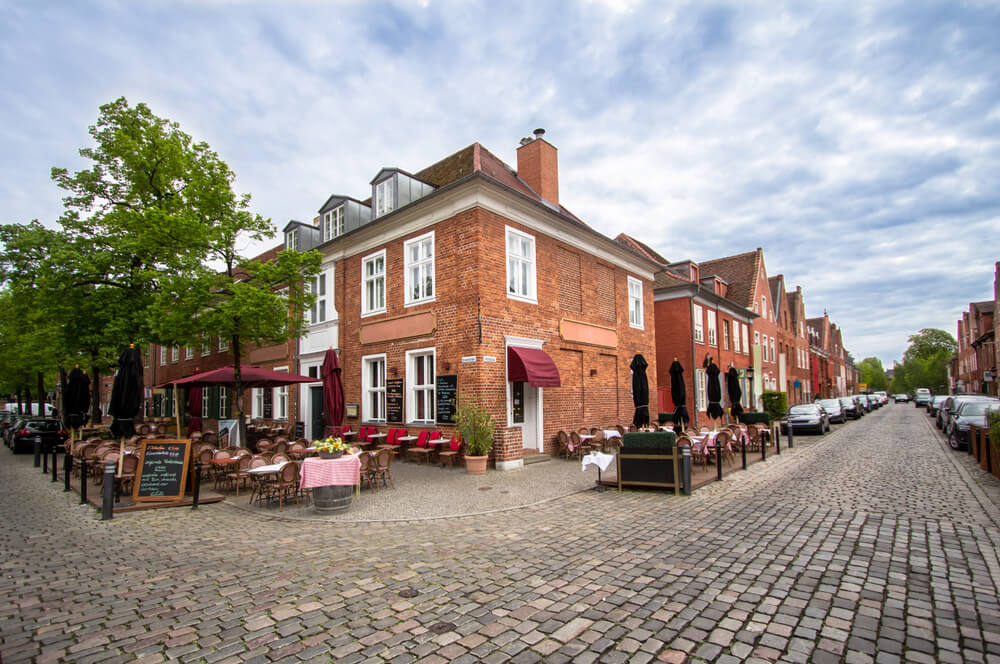
Potsdam is also home to several museums!
A few highlights include: Museum Barberini, housing a beautiful collection of paintings; Potsdam Museum, dedicated to the history of the city; the natural history museum Naturkundemuseum Potsdam; and Filmmuseum Potsdam, dedicated to film history.
As for restaurants, Potsdam offers a variety of both German and international options.
Head to Restaurant Dreimäderlhaus for traditional German dishes, enjoy refined Italian dishes at Assaggi or try tasty Middle Eastern food at De Lewante Restaurant.
Join a guided day tour of Potsdam from Berlin.
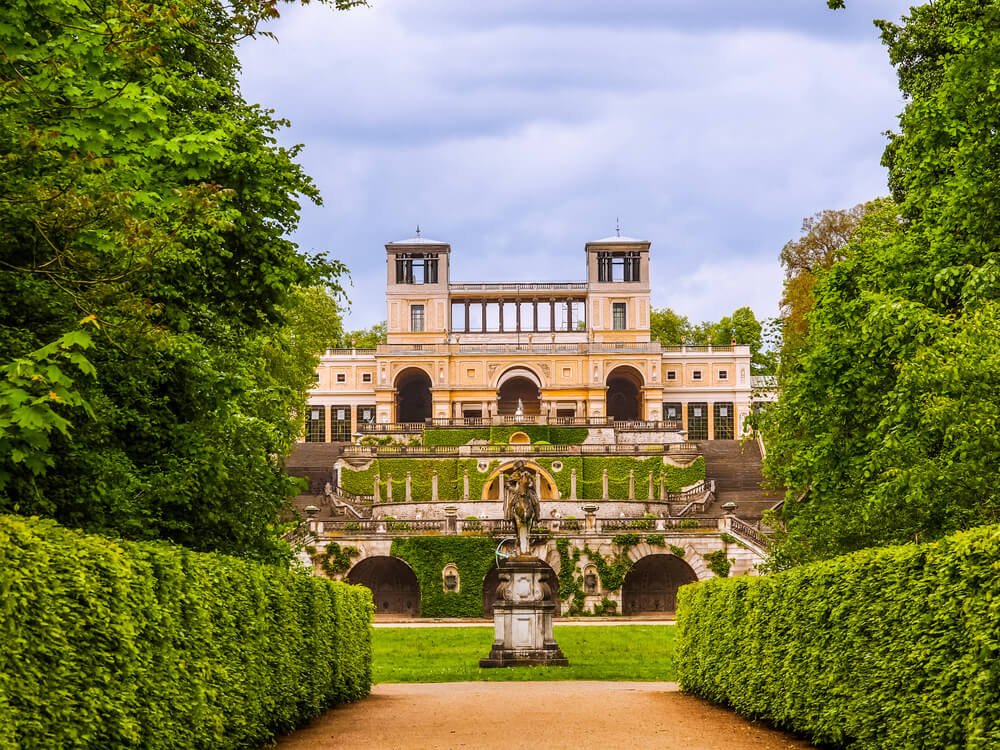
An alternative to exploring Potsdam on your own is to take a guided tour from Berlin.
This Potsdam Kings, Gardens & Palaces tour will guide you through lovely Potsdam and Sanssouci Park as your guide tells you stories about the town’s history.
Note that the guided tour doesn’t cover entry fees or the train ticket.
However, this is the perfect option if you want to learn more about the places you visit and don’t want to bother planning everything.
The day trip to Potsdam concludes this Berlin itinerary!
It’s time to head back to the city for one last dinner before saying goodbye to Germany’s vibrant capital.

Roxana is a Romanian-born freelance travel writer who has lived in Italy for over 15 years. She has a Master’s in Journalism and a Bachelor’s in Film Studies, and she studied at Università degli Studi di Roma Tre. Besides her native Romania, Roxana has lived in Rome, Lisbon, and Berlin, and she has traveled through much of Europe in search of hidden gems, history, and culture.
